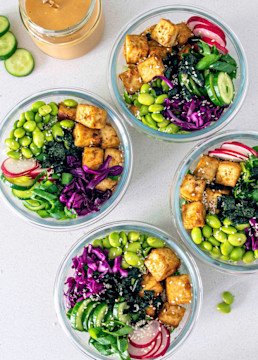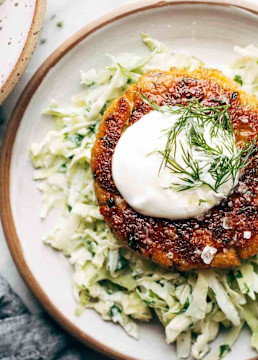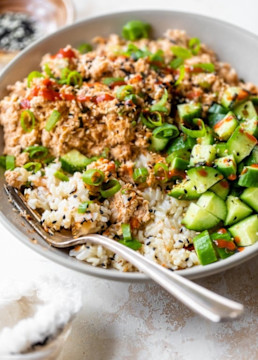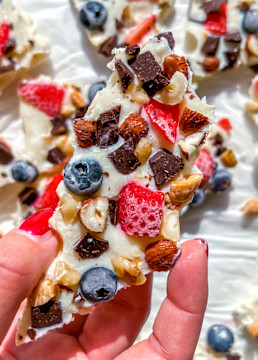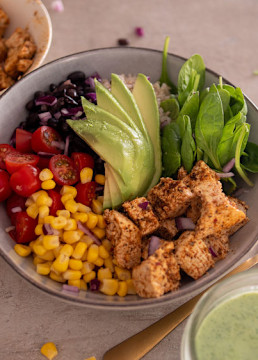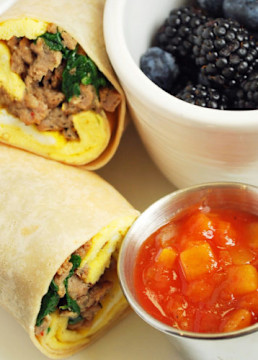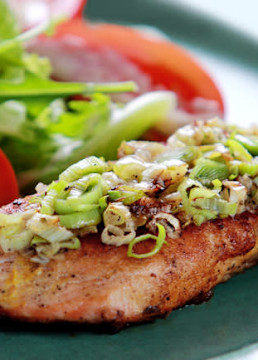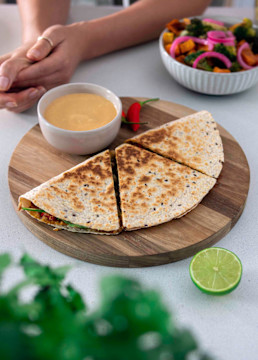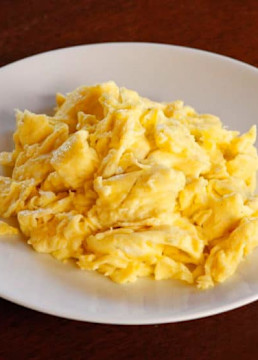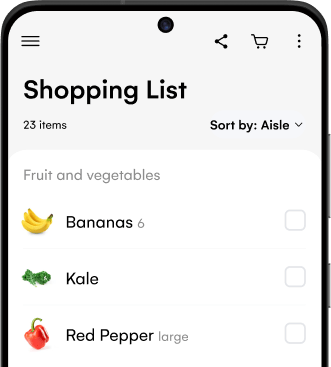Aiming to achieve your fitness goal or build more muscle? Then this meal plan might be for you! We know that figuring out a high-protein low-calorie meal plan can be challenging at first. Before you know it, you’re overshooting your calorie allowance! Luckily, our in-house nutritionist has got you covered with 7-day high-protein low-calorie meal plan that was created to achieve the right balance between protein, carbohydrates, fat.
This was done by choosing nutrient-dense ingredients and at the same time, still making it appetizing and fun to prepare. This approach not only supports weight management but also helps preserve lean muscle mass and keeps you feeling full and energized throughout the day. We also like to plan similar meals throughout the week to help you save time, and money. If you don’t mind repeating meals throughout the week then this meal plan might work for you.
If you’re not sure if this meal plan is for you, then you can read more about this diet below, and come back to our meal plan later!
Our 7-day High-Protein 1600-Low-Calorie Meal Plan
For breakfast, snacks, and dinner, you should prepare two servings of each recipe, and have them stored properly in an airtight container and placed in a fridge. This will help you save time on Day 5 Breakfast, Day 7 Snacks and Day 3 Dinner.
To help meet a 1600-kcal recommendation:
Pair your breakfast bowl with high protein french toast.
For lunch, you can add 2 hard boiled eggs and this can also help you meet your protein needs for the day.
Meal prep reminder:
For snacks, you have a similar snack on Day 4, so prepare two servings of it today.
To help meet a 1600-kcal recommendation:
For lunch, you can pair your popcorn chicken with this basic meal prep salad.
Meal prep reminder:
Make two servings of your combination so you can save time on your Day 6 Dinner.
For snacks, you have a similar snack on Day 6, so prepare two servings of this.
For dinner, if you were able to prepare the extra serving of this meal on Day 1, then you just need to reheat it tonight.
Meal prep reminder:
For lunch, make two servings of this dish, and store one serving properly in an airtight container in the fridge. Then you’ll save time on Day 6 Lunch.
Meal prep reminder:
If you made two servings of your Day 1 breakfast, you can just reheat your second serving this morning.
For lunch and dinner, both dishes are planned for Day 7. So you can prepare two servings of each dish, and store the extra servings in an airtight container in the fridge.
You’ll have to cook at breakfast but if you were able to prepare meals for lunch, snacks and dinner in the days before, then there’s no need for you to prepare and cook anything else today!
To help meet a 1600-kcal recommendation:
For dinner, you can pair your popcorn chicken with this basic meal prep salad.
If you were able to prepare meals for lunch, snacks and dinner in the days before, then once you’ve made breakfast, you’re done cooking and prepping for today!
To help meet a 1600-kcal recommendation:
You can pair your breakfast bowl with a high protein french toast.
Note: Each person has different calorie needs depending on their age, weight, height, sex, physical activities and medical conditions. This means that this high protein low calorie meal plan may or may not be the one that you need. It’s best to check first how much calories and macronutrients you need in a day and how many calories you need to deduct for you to truly determine how much is a “low-calorie” meal plan for you.
Ingredient and Shopping Tips for the High-Protein Low-Calorie Meal Plan
The 7-day meal plan we’ve created for the high-protein low-calorie meal plan is easy to follow – but some tips never harmed anyone! We’re all about saving time, money, and making your eating habits work for you. Here are a few things to consider when you’re shopping for your ingredients.
- In this meal plan, you’ll notice that there are dishes that need rice, and tortilla or pita wraps. You can choose to buy the whole grain ones for all of the recipes that involve rice and tortilla or pita wraps.
- Three of the recipes in this meal plan has sweet potato mash, on the first day that you’ll prepare this dish, you can instantly prepare three servings so you can save time on the next time that you’ll prepare it.
- After buying your ingredients, you can choose to season your salmon, chicken and pork ahead of time. You can store them raw in the fridge, or you can choose to cook them in advance. The second option will save you time, but remember to store your meat and fish properly and separately in an airtight container. And of course, place them in the fridge.
Some food safety reminders
As mentioned earlier, this meal plan calls for some meals to be prepared in advance to save time. Here are some food safety tips to keep in mind when preparing meals in advance:
- Start with clean hands and surfaces.
- Use separate utensils, cutting boards, and cooking equipment if needed, especially for special cases like if you have allergies, intolerances and dietary restrictions to avoid cross-contamination.
- Use fresh ingredients and check expiration dates.
- Keep raw and cooked foods separate.
- Cook foods thoroughly and cool them quickly.
- Store meals in airtight containers with labels and dates.
- Thaw safely in the refrigerator, under cold water, or in the microwave.
- Reheat to 165°F (74°C) before eating. Except for those that have different reheating requirements.
- Use or discard leftovers within a safe time frame.
- Trust your senses – if it smells off, looks odd, or has mold, discard it.
What is a high-protein low-calorie meal plan?
A high-protein, low-calorie meal plan is a dietary approach that prioritizes foods rich in protein while keeping your overall calorie intake lower than your recommended daily requirement. This type of meal plan is designed to support weight management, specifically weight loss. The aim of this meal plan is to promote satiety, while preserving lean muscle mass, and maintaining a steady and healthy calorie deficit.
Reminders before following a high-protein low-calorie meal plan
Consult with a Healthcare Professional
For most healthy individuals, a high-protein, low-calorie diet is safe, given that they have a health goal in mind. This is usually recommended for people who would want to lose weight and gain muscle. But make sure that you consult a healthcare professional first and determine if you have any underlying conditions. Furthermore, it’s recommended to consult with a registered dietitian so they can provide personalized recommendations based on your individual health status, dietary needs, and goals.
If you’re goal is to lose weight, make sure to read 7 Strategies to Stay Motivated on Your Weight Loss Journey.
Aim for balanced nutrition
Following a high-protein, low-calorie meal plan doesn’t automatically mean that you need to cut out carbs or remove any food groups in your food choices. In fact, both carbs and fat help with muscle building! That why it’s still important that you maintain a balanced diet with variety of foods from all food groups. Your meal plan should still include a mix of lean proteins, healthy fats, complex carbohydrates, fruits, vegetables, and other essential nutrients to support overall health and well-being.
Monitor portion sizes
It’s easy to eat too little, and even overeat on protein sources when following a low calorie high protein meal plan like this. That’s why it’s important to pay attention to portion sizes to ensure that your calorie intake aligns with your goals. You can read more about why eating too little won’t help you with weight management.
Stay hydrated
It’s easy for people to underestimate the importance of staying hydrated. Remember that adequate hydration is important for overall health and can help support digestion, metabolism, and appetite control. You may also need more intake if you’re doing medium to high-intensity physical activities.
Be Mindful of Quality
Choose nutrient-dense, whole foods whenever possible. While processed and packaged foods may be labeled as “low-calorie” or “high-protein,” they may contain added sugars, unhealthy fats, and other additives that can negatively impact health. It would also be good to read the label to spot added sugars first when buying your ingredients or snacks.
Listen to Your Body
Pay attention to hunger and fullness cues, as well as how your body responds to different foods. Everyone’s nutritional needs and preferences are unique, so it’s important to listen to your body and make adjustments as needed.
Consider Lifestyle Factors
Take into account your lifestyle, schedule, and preferences when planning your meals. Choose foods and recipes that are practical, convenient, and enjoyable to help you stay motivated.
FAQs on High-Protein Low-Calorie Meal Plan
A high-protein diet means that a higher proportion of your caloric needs are allotted for protein as compared to carbohydrates and fat. Usually this would be from more than 20% up to 35% of you recommended daily calorie intake. And to be more precise, it would be 1.2–2 g per kilogram body weight per day for normal, healthy individuals.
The amount of protein needed varies depending on factors such as age, gender, body weight, activity level, and health goals. Athletes and individuals engaged in intense physical activity may require higher protein intake to support muscle repair and growth. It’s best to consult a healthcare professional to know more about this.
Your individual goals, preferences, health condition and needs would be the deciding factors here. Consulting with a healthcare professional and a registered dietitian can help you determine whether or not you need this combination.

